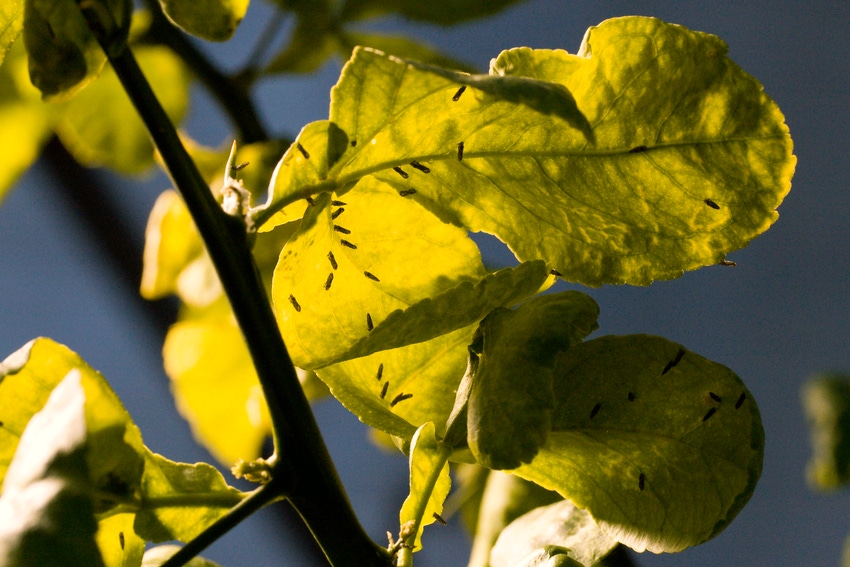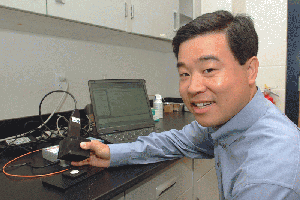November 3, 2016

A time-lapse polarized imaging system may help citrus growers detect greening before the plant’s leaves show symptoms, which should help growers as they try to fend off the deadly disease.
For the University of Florida Institute of Food and Agricultural Sciences study shows, Won Suk “Daniel” Lee and Alireza Pourreza wanted to know how early citrus leaves with greening can be detected while they are pre-symptomatic. So they inoculated plants with the greening disease and put those leaves through a time-lapse imaging system.

Won Suk “Daniel” Lee, a UF/IFAS professor of agricultural and biological engineering, and Alireza Pourreza, a former UF/IFAS post-doctoral researcher, wanted to know how early citrus leaves with greening can be detected while they are pre-symptomatic. So they inoculated plants with the greening disease and put those leaves through a time-lapse imaging system. Image by Marisol Amador, UF/IFAS file photograph.
Won Suk “Daniel” Lee, a UF/IFAS professor of agricultural and biological engineering, and Alireza Pourreza, a former UF/IFAS post-doctoral researcher, wanted to know how early citrus leaves with greening can be detected while they are pre-symptomatic. So they inoculated plants with the greening disease and put those leaves through a time-lapse imaging system. Image by Marisol Amador, UF/IFAS file photograph.There, they found starch in the leaves, an early sign of greening, said Pourreza, a former post-doctoral researcher in the UF/IFAS agricultural and biological engineering department. In their study, UF/IFAS researchers detected greening about one month after they infected the trees, he said.
Timely detection and removal of greening-infected trees are necessary to manage the disease, said Lee, a UF/IFAS agricultural and biological engineering professor and an author on the study.
“Citrus growers in California, Florida and Texas are very interested in employing this detection method to protect their groves,” said Pourreza, who now works for the University of California Kearney Agricultural Research and Extension Center. “This methodology was basically designed to show the greening hot spots in the grove.”
That way, growers can diagnose the disease promptly. The most accurate lab test for detecting citrus greening remains the polymerase chain reaction, a DNA-amplifying technique.
UF/IFAS researchers presented findings from the new study at the International Federation of Automatic Control Conference on Sensing, Control and Automation for Agriculture in August.
You May Also Like




